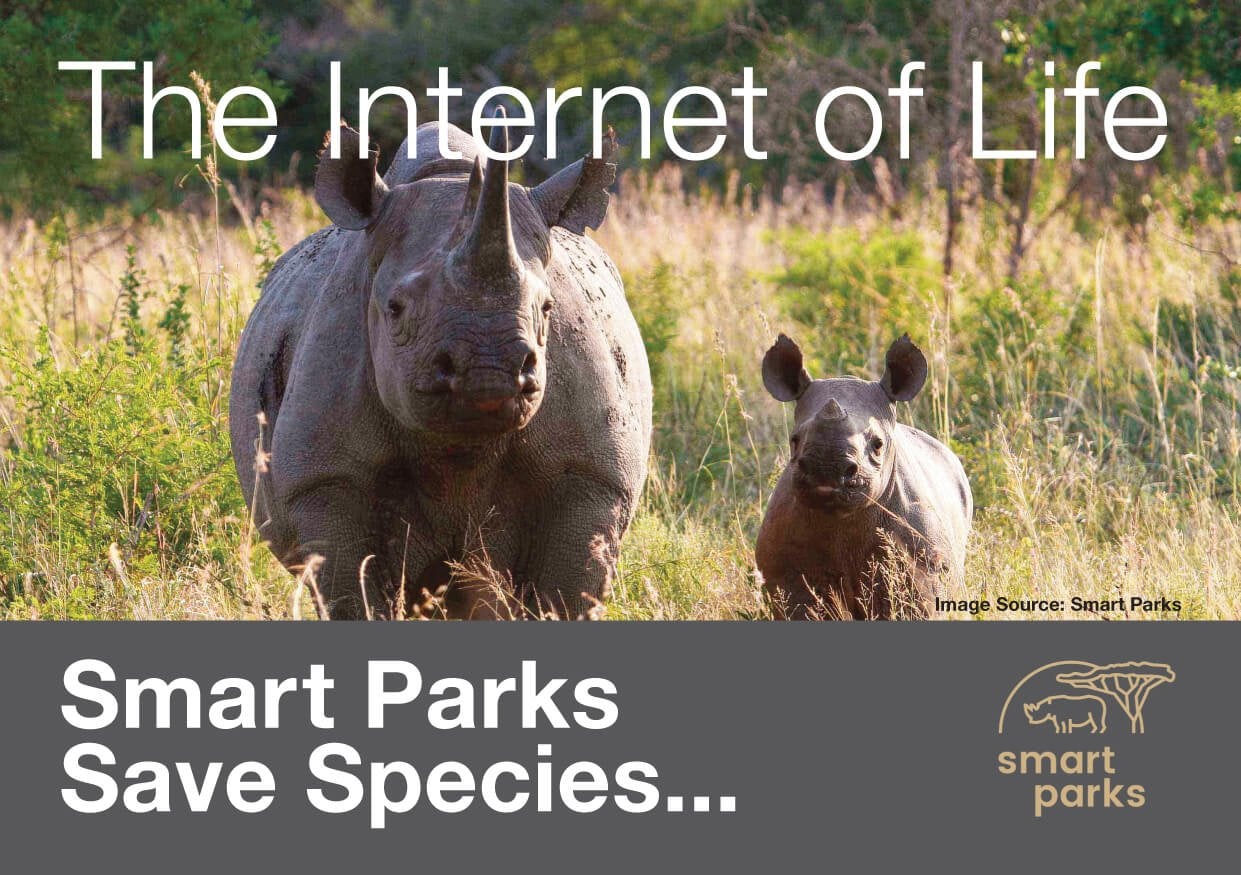Smart Parks Save Species
The future is full of visions for smart cities, but with a clear need to conserve natural environments and ecosystems, connected technology is seeing some exciting applications in ‘smart parks’, too.
Dutch conservation organisations ShadowView and Internet of Life are already using IoT networks to afford staff and rangers of smart parks situational awareness as sensors monitor animals, people and vehicle movement across the park with the main objective, at present, being to protect the animals from poachers.
Rwanada’s Akagera National Park now uses a ‘smart park’ system developed by ShadowView and the Internet of Life, based on Long Range Wide-Area Network (LoRaWAN). The network technology is low-bandwidth and low power as it needs to cover large areas at a low cost. LoRaWAN technology has already been applied to develop IoT networks in smart cities such as Amsterdam. The LoRaWAN network works using a set-up of gateways within 12 towers at points of high elevation across the park to which 100 solar-powered sensors send constant signals which are relayed to a central control room where officials can observe the information provided.
The existing technology provides reserves or national park staff with an advantage. ShadowView founder Laurens de Groot, a former police officer notes that “in the Western world, we’re chasing the guys who are already ahead of us with new technology” whereas in the parks in Africa de Groot feels the new technology allows them to “stay ahead of the bad guys.” The technology also has the potential to provide valuable real-time data to help monitor the 433 square miles of land, where 3G and 4G can be unreliable. Founder of Internet of Life, Tim Van Dam also believes that the system could be scaled up to use 100,000 sensors which could potentially cover vast expanses of national parks or reserves globally.
The scope of future smart parks could provide valuable data for research, but at present the most important objective is to tackle poaching and protect endangered species to keep the ecosystem in balance. The Peace Parks Foundation in South Africa protects rhinos, and it is predicted that if the current rate of poaching continues the entire population of rhinos in South Africa will be extinct by 2025. Whilst alternative approaches such as the International Humane Socie0ty’s Project RAPID (Real-time Anti-Poaching Intelligence Device) use heart rate monitors and cameras to then dispatch helicopters to deal with poachers, the Peace Parks uses aerial photography and remote sensing systems and believes Machine Learning could help with a more immediate alert and response to poaching. Machine Learning would reduce the amount of data; visual or audio that humans would have to review if computers could differentiate between different species. Other technological solutions include Domain Awareness Systems (DAS) which use real-time data visualisation and analysis by integrating data from drones, weather monitors, camera traps, trackers and satellite imagery. DAS algorithms could predict potential sites and dates when poaching may occur using data gathered on animal movements, vegetation and seasonal conditions.
This use of technology to innovate and support methods of conservation is being supported by the programme AI for Earth, which Microsoft and National Geographic have partnered to provide $1 million worth of Innovative Grants to aid conservation research with the vision of creating a more sustainable future. Lucas Joppa, Microsoft’s chief environmental scientist stated “We believe that humans and computers, working together through AI, can change the way that society monitors, models and manages Earth’s natural systems.” The LoRaWAN network is a successful example of a model which can be recreated and expanded to deal with the immediate threat to endangered species and the future issues of human encroachment and climate change impacts by monitoring Earth’s natural systems.
